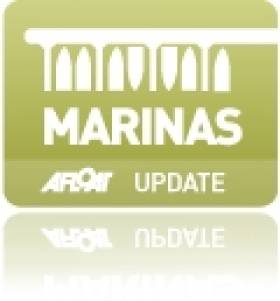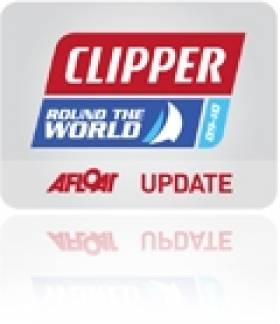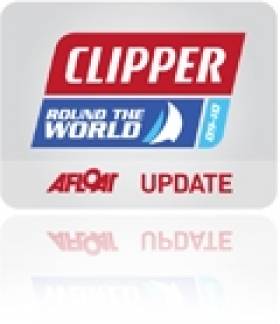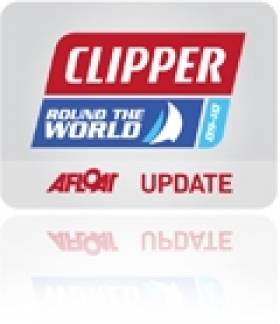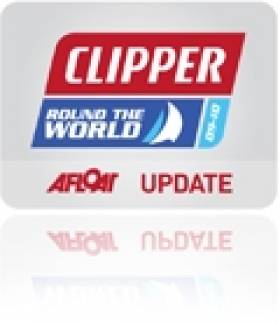Displaying items by tag: Derry
#Rescue - Castlerock RNLI lifeguards rescued a family of six after they got into difficulty on the town’s seaside beach in Co Derry yesterday (7 July).
Senior RNLI lifeguard Gordon Clark was patrolling busy Castlerock beach when at he noticed a person in the water waving for help a short distance to the right of the flagged zone on the beach around 5.30pm.
The family of six – including a man, woman and four children – were all on bodyboards when they got caught in what appeared to be a flash rip, a strong current running out to sea.
After radioing for assistance, Clark swiftly entered the sea with a rescue tube. He was quickly joined in the rescue operation by his RNLI lifeguard colleagues Jenny Thompson and Ray Cunningham.
Clark and Thompson proceeded to safely ferry the children, followed by their parents, to the shore, where they were checked over to ensure they hadn’t taken on any water. All were safe and well.
Speaking following the rescue, Mike Grocott, RNLI lifeguard manager for Northern Ireland, said: "Rip currents often catch people out because they can be difficult to spot, and research shows that most people don’t know how to identify one. They are a major cause of incidents that the RNLI’s lifeguards deal with each season.
"Anyone who gets caught in a rip should try to remain calm, raise their arm in the air to signal for help like the family member did today. If they feel they can swim, they should swim parallel to the beach until free of the current, and then head for shore."
With temperatures expected to soar this week, Grocott reminded people to be mindful of the RNLI’s key safety recommendations – choose a lifeguarded beach and swim between the red and yellow flags, which mark the safest area to swim and are an indicator that lifeguards are on duty.
First Foyle Regatta For Sailors With Disabilities
#Regatta - The recently established Foyle Sailability will host its first regatta for people with disabilities in Derry this Thursday and Friday 16-17 May, as the Derry Journal reports.
Volunteers from Lough Foyle Yacht Club, Lough Swilly Yacht Club and Moville Boat Club will be on hand, joined by volunteers from Belfast Lough Sailability for the two-day event which marks the first time that a fleet of accessible dinghies has cruised together on the River Foyle.
People with disabilities across the northwest are invited to try out sailing for themselves by contacting Foyle Sailability at 71 266 593 or [email protected].
The regatta will meet at the Foyle Pontoon at Riverfront Walkway off Baronet Street from 11am to 3pm each day of the event.
#News - UTV News reports that a body recovered from the River Foyle on Thursday 9 May is that of missing Dublin teenager Kieran McKeon.
The 18-year-old was reported missing two months ago along with a friend, 21-year-old Alexandra O'Brien, whose body was found in the water close to Foyle Bridge in Derry on 14 March, as previously reported on Afloat.ie.
It's thought that the two took their own lives in a suicide pact, after eyewitness reports described two people falling into the river from the bridge.
Personal items said to belong to O'Brien and McKeon were found on the bridge which sparked off the search operation led by Foyle Search and Rescue, which had continued every evening since at low tide, with a full search once a week.
UTV News has more on the story HERE.
#News - BBC News reports that the body of a 21-year-old woman from Dublin has been recovered from the River Foyle in Derry.
The body of Alexandra O'Brien was found by the Foyle Search and Rescue Team assisted by the PSNI and Sligo coastguard on Thursday evening in an operation that began after personal belongings were found on the Foyle Bridge.
O'Brien was last seen in Derry on Thursday morning with friend Kieran McKeon, 18, who is also missing.
According to the Irish Independent, it's feared that the two may have taken their own lives in a suicide pact amid eyewitness reports that they were seen falling into the river from the bridge.
Fanfare in Derry as New Marina Officially Opened
#IRISH MARINAS - Five months after hosting the Clipper Round the World yacht race this summer, the new marina at Derry-Londonderry has been officially opened to much fanfare.
The Belfast Telegraph reports on the weekend's celebrations, which welcomed the return of the city's entry in the world-renowned yacht race.
Derry-Londonderry's challenge will soon be featured in the Discovery Channel TV documentary series Against the Tide, according to the Derry Journal.
Speaking at the launch event, Foyle Port CEO Brian McGrath hailed its "state-of-the-art facilities for hosting maritime events".
The new marina is a joint initiative by the Loughs Agency and Cruise Initiative and is maintained by Foyle Port.
Boys Rescued From Rocks Off North NI Coast
#LIFEBOATS - Two teens were rescued from rocks off north Co Derry on Wednesday afternoon, the Belfast Telegraph reports.
The 13-year-old boys were stranded by the incoming tide in the East Promenade area of Portstewart.
PSNI officers called to the scene around 4.30pm managed to persuade one of the boys to cross to the shore, but the coastguard was tasked to lift the other boy from the rocks by the RNLI, according to UTV News.
Police inspector Mick Wood said that the incident "serves as a reminder to us that tides are extremely unpredictable".
Clipper Festival Ends with a Splash in Derry
#ClipperAfter nine days of activities, exhibitions and concerts the Clipper Festival draws to a close today but not before an array of water based displays and boat tours and visits.
Today the River Foyle will be at its busiest yet with boat tours, ship visits, racing and jet skis with a variety to whet everyone's appetite.
Before the stunning Earl of Pembroke Tall Ship set sails at 9:30pm this evening it will be open for public viewing 10:00am-5.30pm while the impressive naval vessels lining the quay will be open from 10:00am – 1:00pm and 2:00pm – 4:00pm.
Boat tours for the Maid of Antrim and the Wee Blue Boat will be taking place from the Marine Event Pontoon throughout the day and the RNLI Seth Bell, one of the largest lifeboats in the RNLI fleet, will be open for public viewing. Opening times are from 10:00am – 5:00pm.
Experience Derry~Londonderry's first ever Zap Cat Grand Prix as these small and speedy catamarans will make you dizzy with their high octane performance. They guarantee a high octane fuelled show that's not to be missed. Racing starts at 11:00am and concludes with a prize giving ceremony at 3:00pm.
Look out for a display of speed defying stunts and tricks from some of the top water sports experts in the world. The shows feature 'Edge Water Sports' (water-skiing and wakeboarding) and Freestyle jetski displays taking place from 4:00pm – 6:00pm and includes a show every 15 minutes. The shows will be set to live commentary and film footage taken from the water will be relayed to the quayside screens.
The Continental Market and Creativity Zones will also continue throughout the day from 11:00am– 6:00pm.
Come and enjoy a spectacular farewell to a Legenderry Clipper Homecoming Festival that has seen record numbers visit Derry~Londonderry.
A Park 'n' Ride service will be available today, from 1pm – 6pm every 20 minutes taking you to where all the fun and events are located on the Quay. Pick-up/Drop off points will be at Templemore Sports complex, going to Sainsbury's Strand Road, and return. Event Park n'Stride is available at Magee College, event car parking is also available in all city centre car parks.
The 'Clipper Connection Route shuttle service', will operate from 11am – 7pm every 15 minutes today. Pick-up/Drop-off route: Foyle Street - The Diamond - Orchard Street - Strand Road - Back of the Quay (bus lay-by opposite Quay West restaurant) - Foyle Street
The Clipper 11-12 Maritime and Home Coming Festival is organised by Derry City Council in partnership with Londonderry Port. It is supported by Northern Ireland Tourist Board, MalinWaters as part of the Sail West Project marine tourism initiative, part financed by the European Union's European Regional Development Fund through INTERREG IVA Cross-Border Programme, Invest Northern Ireland, Loughs Agency, Ilex URC, FG Wilson, Diageo and event partners Translink.
Clipper Yacht Race Says Farewell to the Foyle
#clipper – The river will be the arena this weekend for a maritime spectacle never before seen in the city, as the flotilla of Clipper Round the Yacht vessels say their final farewell to the River Foyle and the host post of Derry~Londonderry.
The ten yachts will depart the city on Saturday in a spectacular Parade of Sail, before heading to Greencastle, where they will begin the penultimate race in their 40,000 mile journey. Thousands are expected to turn out to watch the Clippers line-up for their spectacular Parade of Sail with activities commencing on the Quay from 12noon as the yachts prepare to sail from the Quay at 1pm, in what will be an emotional journey for the Derry~Londonderry team as they once again set off from their home port.
The yachts will sail down the River Foyle for the official race start at Greencastle, with live links to the city over the duration of the day so that you can watch the official race start live on quay at 5pm.
The crews have enjoyed a homecoming welcome to remember since their arrival last weekend, with 1,000's along the quay daily enjoying the celebrations and there are still two days to go!! Although the Clippers might be moving on, the party will continue in full swing until Sunday. After the Parade of Sail on Saturday, the Zapcats will be making waves with some high speed action on the river. Reaching speeds of 50mph, these little boats will be performing some breathtaking stunts, with 3G turns and six foot jumps.
"Zapcats go where most other boats dare not," said Mike Sanford, race organiser. "It's fast, it's furious and it's great fun for all the family. Safety is paramount, but I admit that we really do push things to the limit!
"We have 16 competitors coming from all over England, joining teams from Belfast and the Republic. We've already scoped out the lough and are looking forward to two days of challenging racing, after the Clipper fleet departs."
The Zapcat Grand Prix has been compared to motorcross on water, and promises to keep audiences glued to their death defying antics as the two man crews battle it out over short circuits near the Peace Bridge on Saturday from 3pm, and on Sunday from 12noon-3pm.
Throughout the day visits to the stunning Earl of Pembroke Tall Ship as well as the impressive naval vessels lining the quay, will be running from 10am-5.30pm. The Continental Market will be thronged with foodies throughout the weekend with an exciting array of dishes and goods from home and abroad on offer.
The Quayside itself will be buzzing with activity, with music, song and dance at the Quayside stage. And youngsters can get arty in the Creativity Zone, where there will be a full programme of art workshops, magic shows and documentary screenings.
The festival will also feature a series of fascinating environmental exhibitions, as well as the opportunity to trace your family roots and explore the city's maritime heritage in the Environmental and Heritage Zone. And don't forget the festival finale and water display between 4-6pm on Sunday 08th July.
For ease of access, don't forget we have the Clipper Event Park n'Ride at Templemore and event park n'stride at Magee College, event car parking is also available in all city centre car parks.
The Clipper 11-12 Maritime and Home Coming Festival is organised by Derry City Council in partnership with Londonderry Port. It is supported by Northern Ireland Tourist Board, MalinWaters as part of the Sail West Project marine tourism initiative, part financed by the European Union's European Regional Development Fund through INTERREG IVA Cross-Border Programme, Invest Northern Ireland, Loughs Agency, Ilex URC, FG Wilson, Diageo and event partners Translink.
#clipper – Crossing the finish line off Greencastle on the north Irish coast at 0237 GMT this morning, Gold Coast Australia secured its eleventh win in the Clipper 11-12 Round the World Yacht Race after a 2,350 mile tough upwind battle across the North Atlantic.
In the early hours of the morning the Australian entry made its way from the finish line at Greencastle, County Donegal, through Lough Foyle before arriving into Derry-Londonderry in Northern Ireland this morning where hundreds of spectators awaited them.
Upon arrival, Tasmanian skipper, Richard Hewson said, "The worst part for us as a team was the lack of sleep and we didn't see sunshine for about two weeks. It was all worth it though as we had head winds behind us the whole way up here and before we knew it we were in Northern Ireland being welcomed by a flotilla of ships. Incredible!"
Reflecting on the tough conditions of the North Atlantic, Richard continued, "As tropical storm 'Chris' developed, the tough conditions really tried to batter the fleet, but I saw it as an opportunity for us to take advantage of the strong winds and head to the south. Once we managed that, we put the kite up and we were flying along ahead of the rest of the fleet, especially those who chose to go to the north. "
Singapore is expected to finish in the next few hours, with the rest of the fleet still fighting the final miles to secure the best possible finish in this tough final ocean crossing.
Despite bad luck early on in the race, diverting to gain medical attention for an injured crew member, Qingdao managed to win the Ocean Sprint overnight, subject to verification by the Race Committee. The Chinese entry completed the sprint in 11 hours 38 minutes 09 seconds, beating De Lage Landen's time by just under 20 minutes, securing them a vital additional point.
Welcome to Yorkshire currently remains in third place, while Geraldton Western Australia played its 24 hour Stealth Mode card at midnight, in a final tactical battle, hiding from its competitors until midnight tonight.
The rest of the fleet is expected in Derry-Londonderry over the weekend with the final yacht arrival expected Monday afternoon.
First Podium Finish for 'LegenDerry' Irish Crew
#CLIPPER – An ecstatic Derry-Londonderry crew has secured their first podium position of the Clipper 11-12 Round the World Yacht Race. The team, nicknamed the 'LegenDerrys' finished in second place while Gold Coast Australia has claimed victory in Race 7 after the Race Committee made the decision to shorten the course in the stage from the Gold Coast to Singapore.
Extremely light winds which would have prevented the race management team from setting a fair course for the second stage of Race 7, combined with an increased threat of piracy in the Singapore Straits in the light conditions over the Chinese New Year, led to the tough decision. The positions of the yachts at the Celebes Sea Gate, which marked the end of the first phase of the race from Australia, will be taken as the final standings for Race 7.
Race Director, Joff Bailey, told the teams at 0700 UTC today, "Race 7 to Celebes Sea Gate from the Gold Coast was certainly long enough at 3,200nm to qualify as a serious race. It was run fairly, you all had chances to make gains and losses and see your tactics play out and I believe it was one of the most interesting races we have run."
During the race the lead changed hands a number of times as the ten internationally-backed yachts fought for supremacy with Derry-Londonderry, Geraldton Western Australia, and Qingdao all taking their turn to lead the fleet. Gold Coast Australia's tactic of heading much further north than the other nine teams before hooking in to a favourable current allowed them to swoop into the lead in the final miles before the Celebes Sea Gate, which has now become the Race 7 finish line.
They beat Derry-Londonderry into second place by just an hour and 19 minutes, and Geraldton Western Australia claimed third place three hours and 15 minutes behind the Northern Ireland entry. Both teams have recorded their best results of the campaign.
Reacting to news of his team's sixth victory of the Clipper 11-12 Race, Tasmanian yachtsman, Richard Hewson said, "Although the race from Gold Coast to Singapore was cut 'short' I believe it was one of the most mentally challenging and frustrating races to date where any number of tactical decisions could have won the race for any of the ten yachts in the fleet. Crewmembers on Gold Coast Australia are ecstatic about their victory and we will celebrate in style on arrival in Singapore.
"I would like to thank the other yachts in the race, particularly Derry-Londonderry and Geraldton Western Australia who sailed extremely well and made the race very close and exciting."
Mark Light, skipper of the entry representing the UK City of Culture 2013, said, "What a fantastic result for us! I am so proud of each and every one of my crew. We have worked so hard as a team and although a long time coming, we always believed we had a podium finish within us. This gives us huge belief for the next race that we can push on and remain one of the front runners. For me personally it is a brilliant result: a very close second place only 80 minutes behind the overall leader.
"These races are incredibly hard to win and I would like to give massive credit to Gold Coast Australia for another huge result.
"I will be very proud to lead my team up on to the podium in Singapore to represent the good people of Derry-Londonderry and all who have supported us. Thank you very much."
The city's Mayor, Maurice Devenney, congratulating the team said, "We're very proud of the team and they deserve this achievement after their challenging sail. Their global sailing journey helps the city on its journey to tell the world about the many opportunities that exist for tourism, cultural and business connections as we get ready for becoming the inaugural UK City of Culture in 2013. We would like to send the teams our best wishes and we look forward to welcoming them all to the city as part of the race in July 2012".
It was a closely fought race, with both Qingdao and Singapore, who were aiming to be on the podium when the fleet arrives in Marina at Keppel Bay, both in contention for one of the top three places. They finished fourth and fifth respectively; Qingdao's result is a campaign-best result for the Chinese team.
Completing the finish order, De Lage Landen finished sixth, followed by New York, Visit Finland, Welcome to Yorkshire and Edinburgh Inspiring Capital.
The result means Derry-Londonderry moves up the overall table from eighth to seventh place while Gold Coast Australia's win consolidates their dominance of the competition and the team is now 20 points ahead of closest rivals, Visit Finland. Dutch entry De Lage Landen remains in third place overall.
The fleet will now proceed to Batam, Indonesia, where they will muster ahead of a spectacular ceremonial arrival in Marina at Keppel Bay, Singapore on Saturday 28 January.
Ms Wang Look Fung, Director, Group Corporate Affairs at Keppel Corporation, Singapore's Team Sponsor and Host Port Sponsor for the Singapore stopover, said, "Many Keppelites and Singaporeans are all eagerly awaiting the arrival of the Clipper Race fleet into Marina at Keppel Bay. The international event will certainly lend colour and vibrancy to Keppel Bay's appeal as a waterfront lifestyle hub with our luxurious homes, a marina playground, and a host of other waterfront amenities including Singapore's only RYA-accredited Keppel Bay Sailing Academy."






























